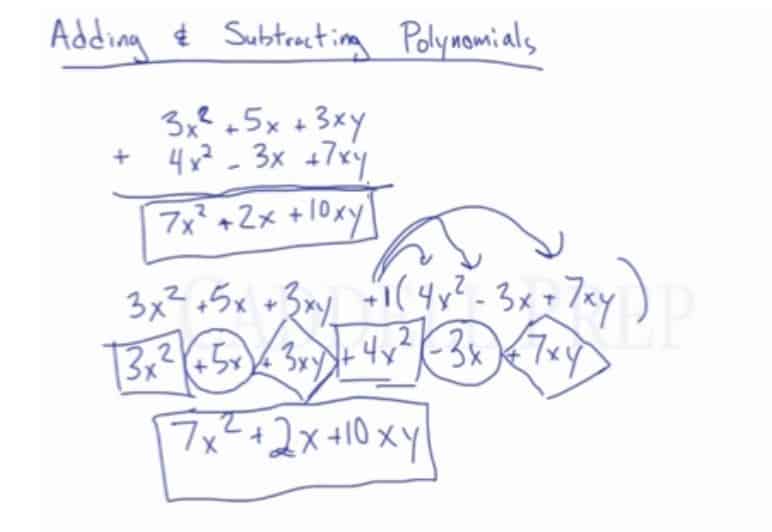In this video, learn how to add & subtract polynomials by combining like terms. After you finish this lesson, view all of our Pre-Algebra lessons and practice problems.
In this video, we are going to look at adding and subtracting polynomials.
For example:
To simplify the expression:
combine the like terms to get the final answer of
To simplify the expression:
we can either keep-change-change or distribute the negative to get
Then, combine like terms to get the final answer of
Sometimes, every term may not line up, such as in the expression
Solve as you would normally by either keep-change-change or distributing the negative, and then combining like terms to get a final answer of
Examples of Adding and Subtracting Polynomials
Example 1
Combine the like terms
Now, we have
Example 2
First, distribute the negative sign to the terms inside the second parenthesis
Then, combine the like terms
Now, we have
Video-Lesson Transcript
Now, let’s discuss how to add and subtract polynomials.
For example, we have
It’s helpful to align the like terms so its easier to combine them.
Now, we combine the like terms
Or we can write the two polynomials on a straight line like this:
Now, we distribute the sign.
It’s like we have at the beginning of the polynomial inside the parenthesis.
So we’ll have
Then, look for the like terms and combine them.
We got the same answer as the first.
Let’s look at an example which involves subtraction.
Since we’re subtracting polynomials, we should do keep-change-change.
Let’s keep the top the same.
Then change the overall minus sign into addition.
Lastly, we change the signs of each term.
Now, it’s time for us to combine the like terms
And the answer is
Now, let’s do this on a straight line.
Let’s distribute the negative sign into the polynomial in the parenthesis. Just like there’s a at the beginning.
So, we’ll have
Then, combine the like terms. We now have
Same as the first answer.
Let’s look at a pretty difficult problem here
Let’s solve this using the two-row format.
Since there’s nothing above the , we can put in
as a place holder.
Then, let’s do keep-change-change since we have subtraction.
It will look like this now
After combining the like terms, the answer is
Now, let’s solve in a horizontal line format
Let’s distribute the negative sign into the polynomial in the parenthesis.
Then, combine like terms.
And we got the same answer.




